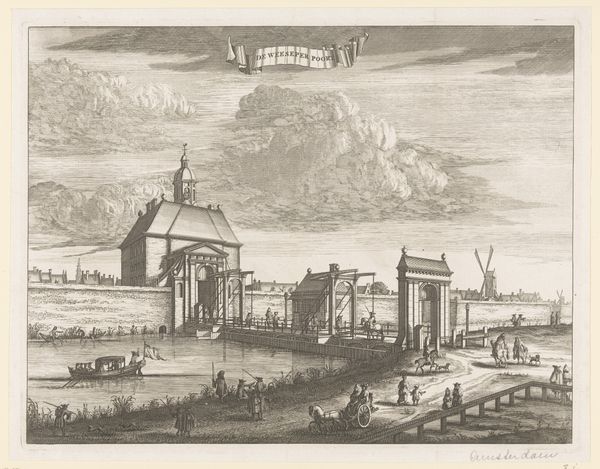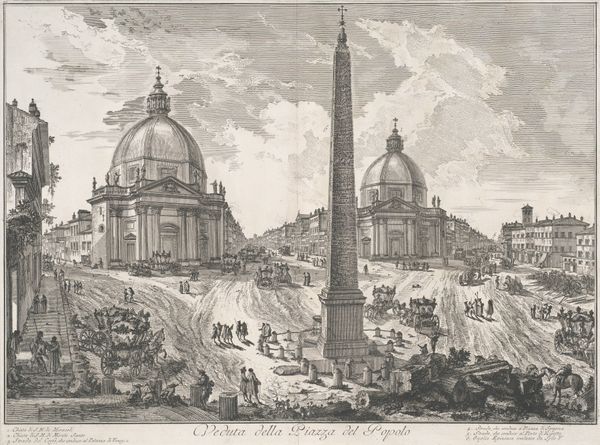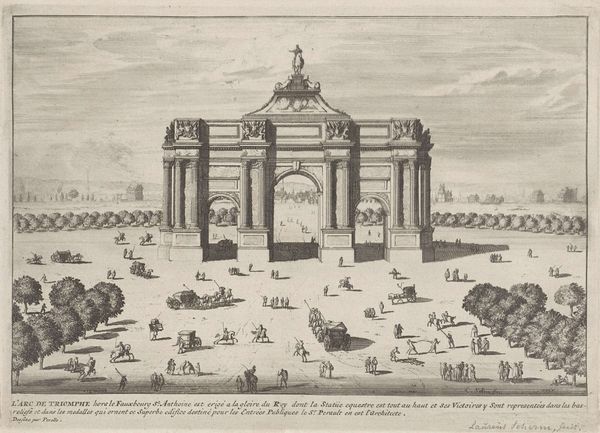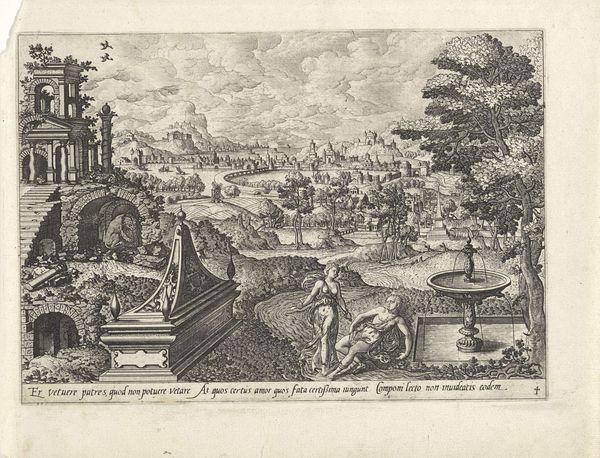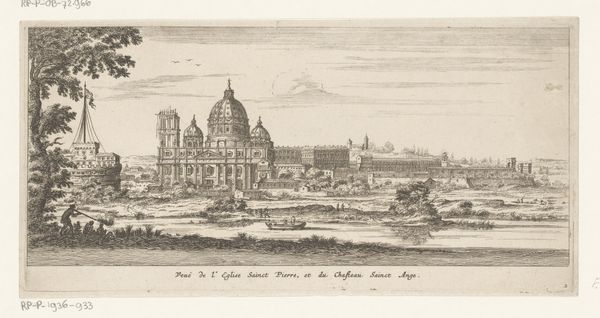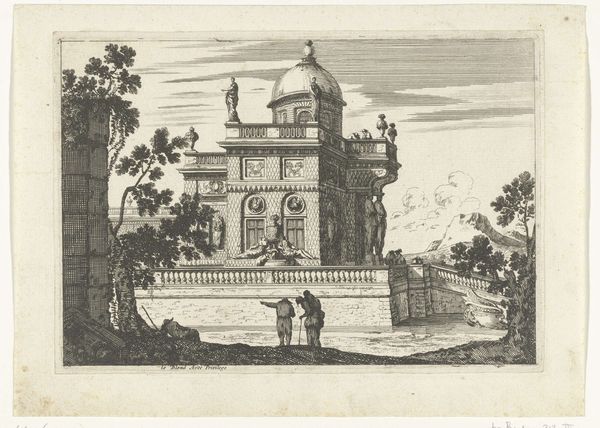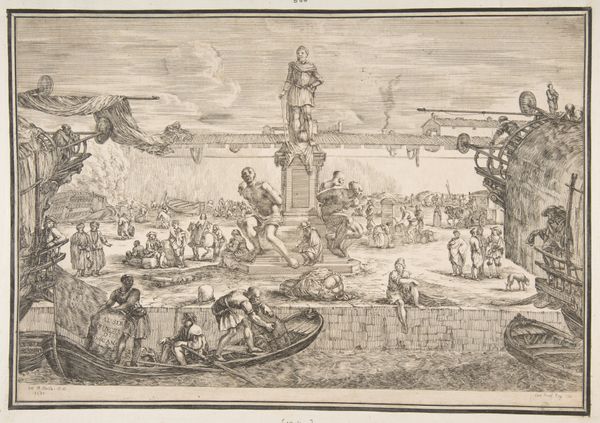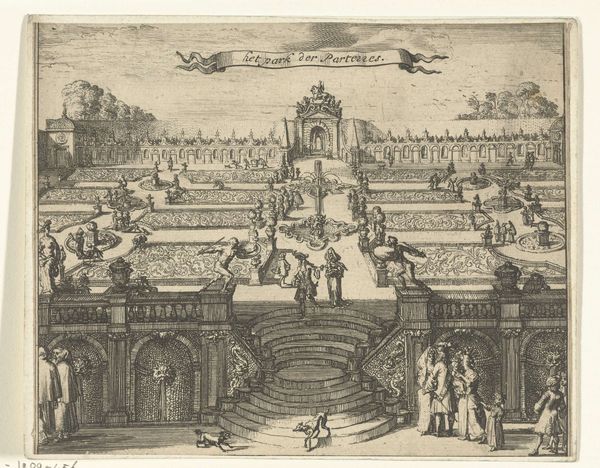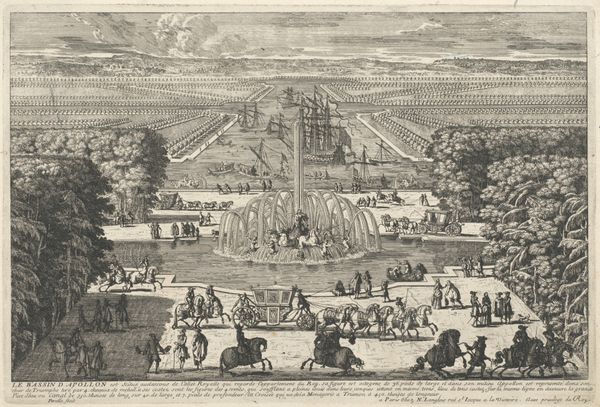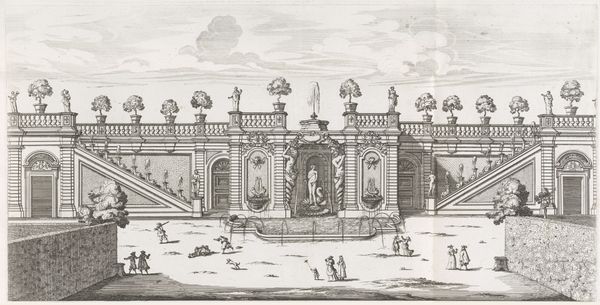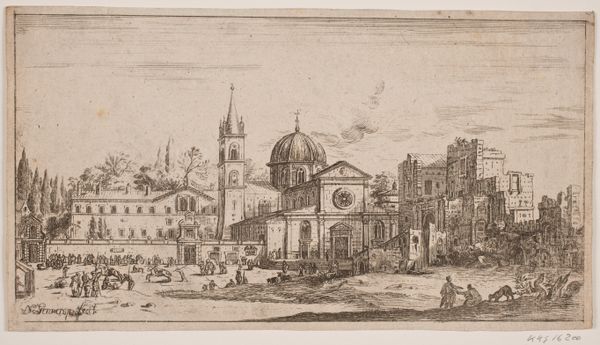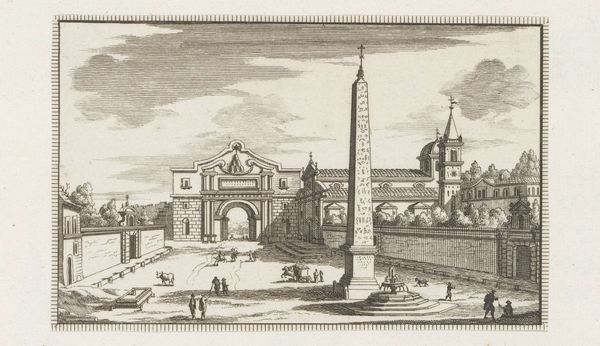
print, engraving, architecture
#
baroque
# print
#
landscape
#
cityscape
#
history-painting
#
street
#
engraving
#
architecture
Dimensions: height 147 mm, width 218 mm
Copyright: Rijks Museum: Open Domain
Editor: This is "Straatstenen leggen op de Piazza del Popolo," or "Laying paving stones on the Piazza del Popolo," an engraving by Gommarus Wouters, from 1696. The scene depicts this very active civic space with such clear Baroque architectural markers. It looks like a construction site in front of monumental buildings! What do you see in this print? Curator: Immediately, I'm drawn to the symbolism of labor embedded in this urban landscape. Look at the workers, seemingly ant-like against the backdrop of grand architecture. Their actions—laying stones—represent the physical manifestation of civic order. Don't you find it interesting how these activities contrast the seemingly effortless permanence suggested by the buildings? Editor: That's a sharp contrast, for sure. The structures convey power, while these figures embody daily efforts. Is there a reason we might see this image produced at this moment? Curator: Precisely. Images such as these serve multiple functions. They depict the reality of building a city but also highlight civic achievement and aspiration. Paving represents progress, literally smoothing the path forward for society. Further, consider how this image might perpetuate a visual narrative: Rome—in all its glory—demands and consumes manual labor. Editor: So it's as much about the *process* of creating Rome, and the people doing it, as it is about the already glorious result. Curator: Exactly. Wouters reminds us that behind every monument is a story of human effort. Look at how even clouds above almost mimic the dome shape – tying labor, power, even the heavens, together! What does that suggest about humanity's place in that cosmic arrangement? Editor: That is fascinating. It is about people leaving a legacy. I guess it never occurred to me to see it this way. Thank you. Curator: It shows the potential for imagery to remind us that great cultural continuity often results from great effort. It can make one wonder what symbols and hidden stories our everyday actions today carry for those in the future.
Comments
No comments
Be the first to comment and join the conversation on the ultimate creative platform.
